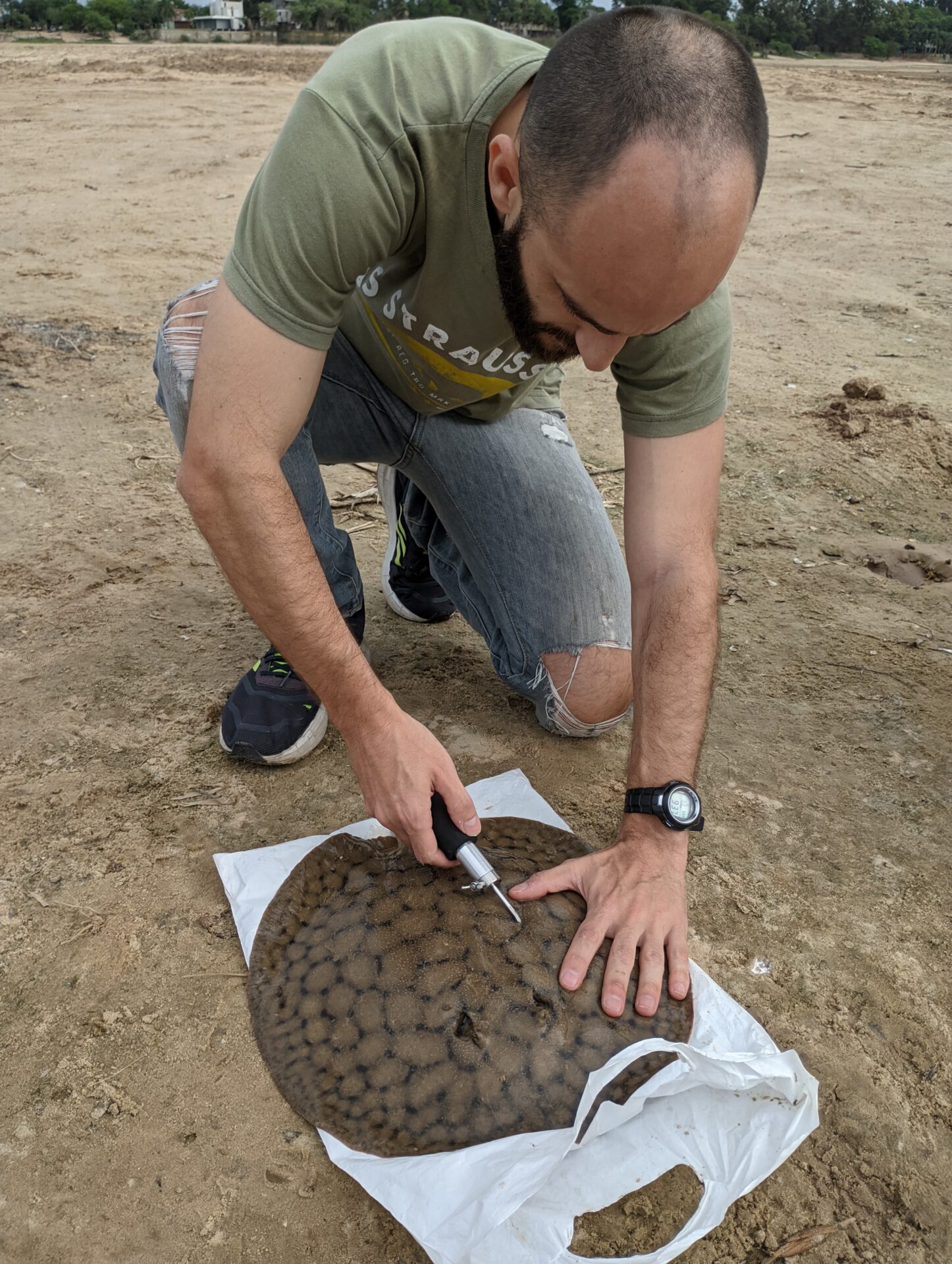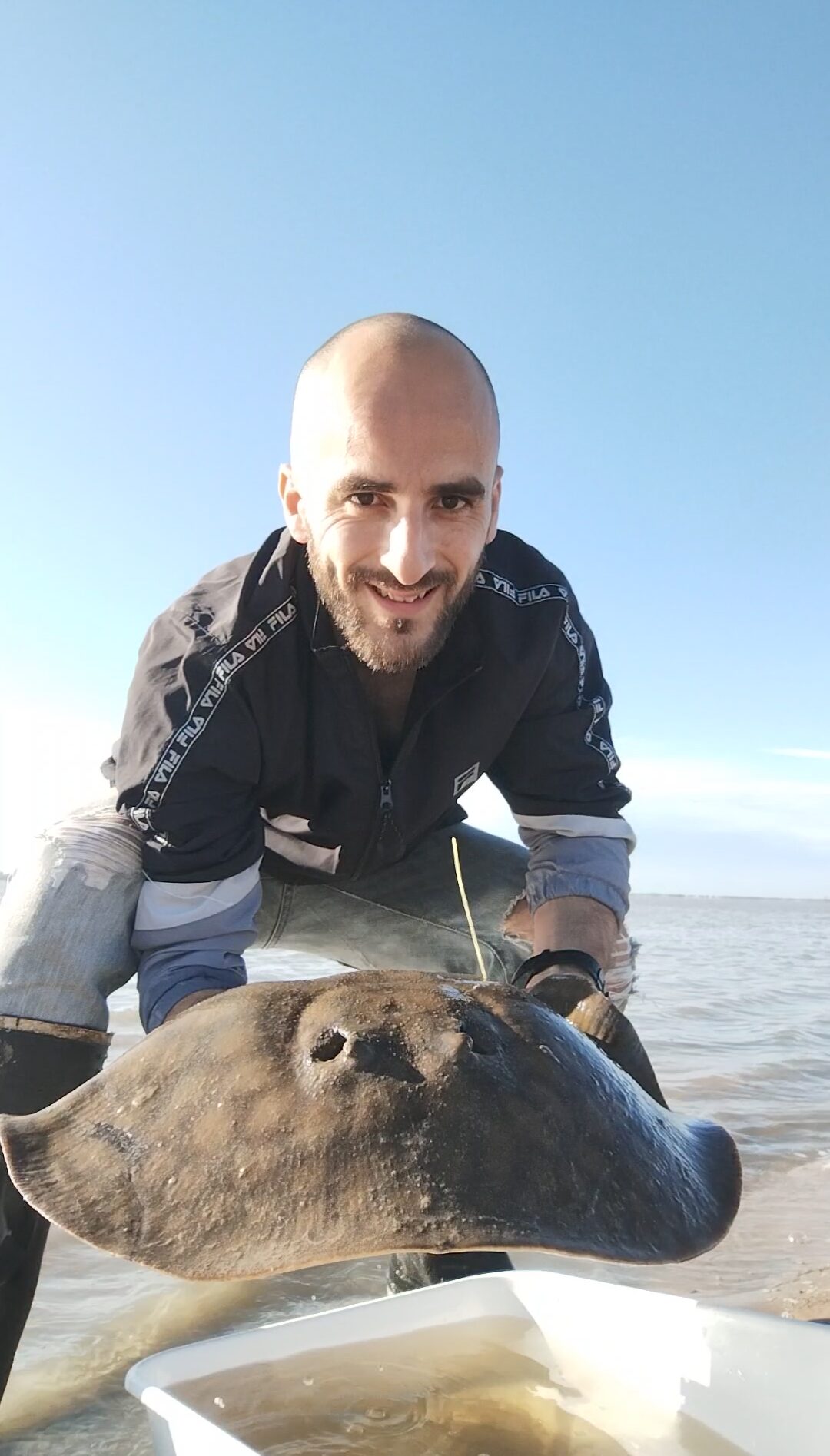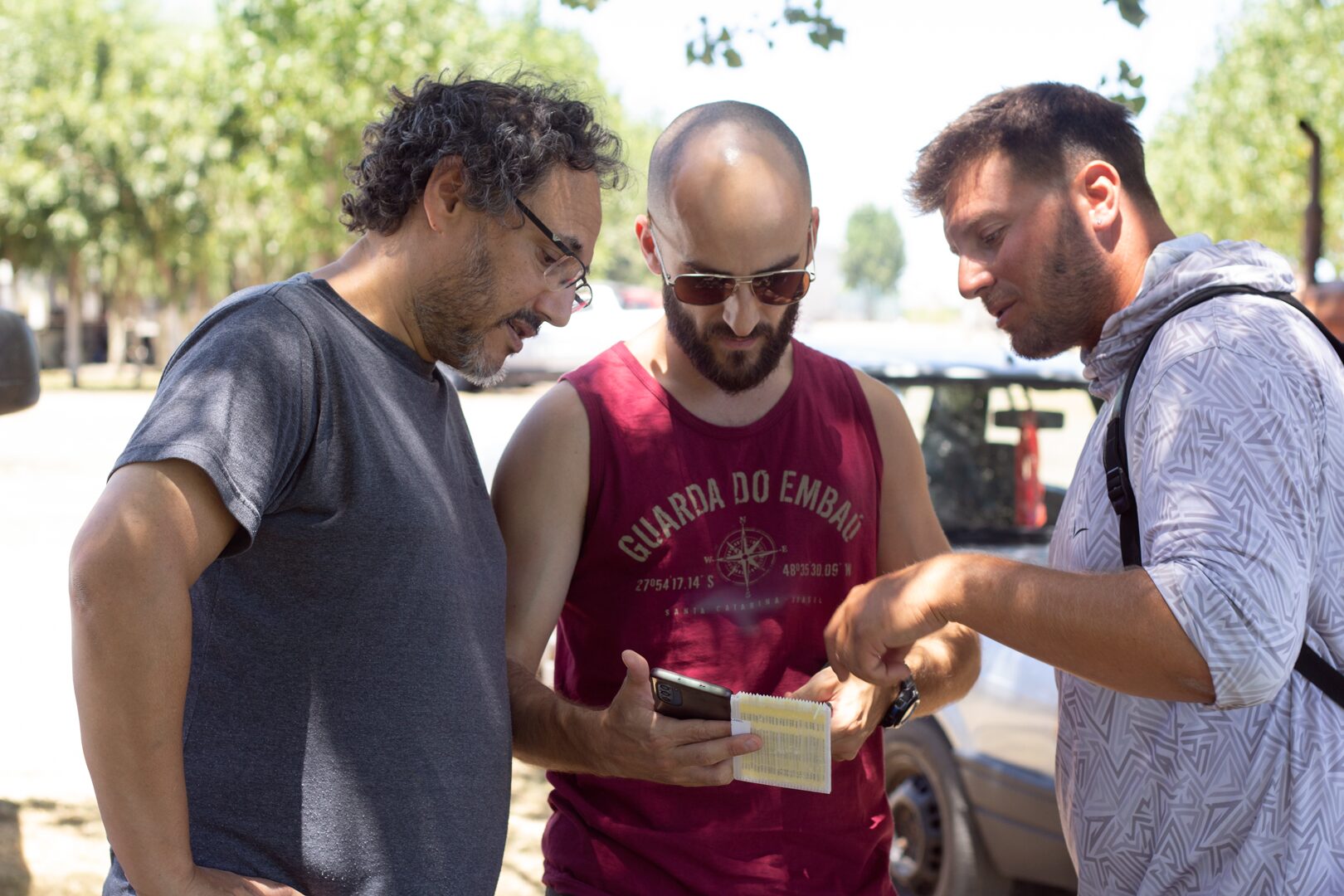Turning setbacks into milestones: the journey to tag the world’s largest obligate freshwater stingray
Let me introduce myself—I’m Martín Vazquez, and I work with the world’s most diverse group of cartilaginous fish that live exclusively in freshwater: the stingrays of the family Potamotrygonidae. Since childhood, I’ve been fascinated by sharks and rays. Family vacations to the beach introduced me to these creatures as I watched fishing boats unload them on the coast of Monte Hermoso, Argentina. After completing my undergraduate studies, I joined several research cruises dedicated to study marine elasmobranchs, solidifying my commitment to studying these fishes.
My doctoral studies at the Universidad Nacional de Mar del Plata focused on the reproduction of marine elasmobranchs. Currently, my postdoctoral research focuses on South American freshwater stingrays, those in the Potamotrygonidae family. Compared to marine species, biological knowledge about this group is limited, presenting a challenge for our team. With the support of Save Our Seas, we launched a challenging project to tag and recapture the world’s largest obligate freshwater stingray, the giant freshwater stingray Potamotrygon brachyura. This species can reach an impressive 176 cm in disc width and weight over 200 kg. Also, it has a low biological productivity and faces a declining population trend in the middle Paraná river, with a heavy fishing pressure without any regulation, which combined with a reduced geographic range calls for urgent science-based management. As 68% of its range lies within Argentina, our project focuses on tagging giant freshwater stingrays with dart tags to know the spatial scale of movements and design science-based conservation strategies. The study is being conducted in the middle Paraná River, where the species is both commercially fished for its meat and highly valued by recreational anglers, as a trophy catch.

Project leader, Martín Vazquez, tagging a juvenile of the giant freshwater stingray Potamotrygon brachyura in the Setúbal lagoon, Santa Fe, Argentina. Photo © Luis O. Lucifora
Despite the project’s importance, starting wasn’t easy. Customs issues with imported tags led to significant delays, including retention, exorbitant tax demands, and the need to reroute the shipment through the United States. Argentina’s current challenges in the scientific sector added to the difficulties, with strict scrutiny of imported equipment complicating matters further. After months of setbacks, we were finally able to secure part of the tags in October—just in time for the fishing season.
We are excited to share that the project is officially underway, with the first two stingrays—both juveniles—successfully tagged! These initial tags symbolize our resilience and dedication, serving as a foundation to refine our tagging techniques as we focus on locating larger specimens.

Project leader, Martín Vazquez, with a juvenile recently tagged and ready for releasing. Photo © Luis O. Lucifora
To expand our efforts, we have provided tagging kits to several sport fishers who are committed to collaborating and promoting the project, so we will undoubtedly have new captures and additional tags being placed in the coming weeks! Although few fishers specialize in catching large stingrays, their involvement is critical to our success so finding them is taking up a significant portion of our time.

Project leader, Martín Vazquez, and his teammate, Luis O. Lucifora, talking to a sport fisherman and handing over a tagging kit. Photo © Patricio Alvarenga
We are currently waiting for the remaining tags to arrive, which will expand our operational capacity. In the meantime, we are fostering connections within the fishing community and preparing for a busy tagging season, we hope! This project represents a unique opportunity to engage fishers and educate the public about stingray conservation in the Paraná River.
